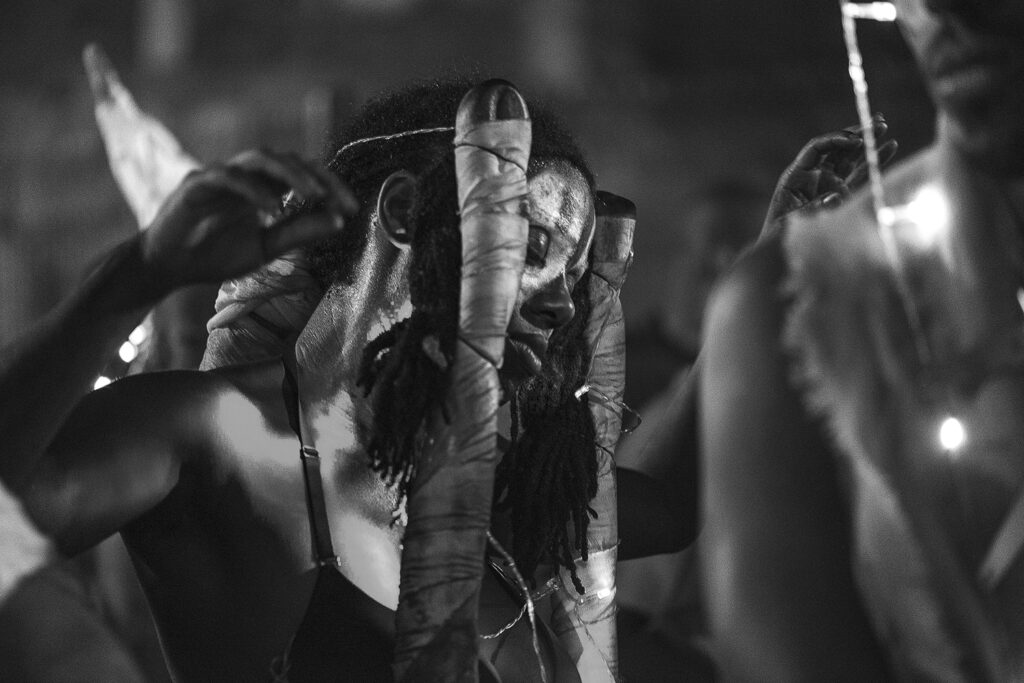
Between dance and trance
Carnival is a particular moment of the year when, from Epi- phany to Ash Wednesday, new representations rise and a country lives to the rhythm of parades, balls, festive events of all kinds.
The street becomes the new space of expression of masked, painted communities, theatricalizing their outings with themes, scenarios, staging and instruments. On this occasion, it is often the usual social order that is challenged, as if new socialities were expressed aiming to build new relations between men. Ephemeral communities if any. Each outing declines a theme, tells a story. Once the carnival is over, it is the return to calm, if not the return to the established order, as if the explosion of the senses, the colors and the sounds was the outlet allowing the acceptance of a daily not always of the most delightful. Communities of the moment that make sense though. Some invariants have been found for some time: the multiplication of groups on foot of all kinds – the importance of multiple percus- sions (drums, chachas, conchs, blowers), as if by noise it is a matter of exorcising some Evil spirit, if not express music, ori- gins expressing an identity and a culture – the use of the whip, with a double symbolic interpretation fertilization and agricul- ture / slavery – the use of incense in a symbolic purification. …
In a society where we often talk about colonization and decoIf Daniel Dabriou not take a position on the debates between anthropologists on the role of music, he nevertheless points out his place through the presentation of certain instruments, which we feel he gives them an essential place, both geogra- phical in the Space of the group, that symbolic. The blur allows to grasp the movement, the movement in this space now pos- sessed. Incense, in a way, facilitates the letting go, the moment when, eyes, open, half-closed or closed, testify to the process of the great departure to the elsewhere.